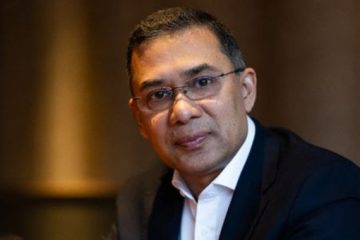Drought-hit farmers in the northern region say they need uninterrupted electricity supply, not free electricity, to irrigate their paddy fields as Aus crop has already been affected and Aman cultivation runs out of time.
As officials are gearing up for implementing the government’s offer to distribute electricity to irrigation pumps free of cost, farmers expect little from it since outages keep the pumps idle for most of the day.
‘We don’t ask for free electricity for irrigation as that may make ways for corruption and benefit the influential people and ruling party men,’ Abdul Hakim, a farmer of Jugisho village at Tanore upazila said.
The lowest monsoon rainfall in years has prompted the government to offer free electricity for 100 hours to each irrigation pump, and a farmer with one bigha land would not have to pay electricity bill for running the pump only for half an hour.
Half-an-hour’s irrigation is much less than the water needed for Aman cultivation and if monsoon rain is delayed further, aman fields would just be dried up halfway through cultivation given the erratic power supply, farmers fear.
‘We are in fear about irrigation for the whole aman season if drought prolongs,’ said Rafiqul Islam, a farmer in Godagari upazila, some 30 kilometre northwest of Rajshahi divisional headquarters.
A dozen of farmers shared the same worries.
‘With 100-hour free electricity allocated for a pump, a bigha of Aman land will get about half-an-hour free service, if the size of an irrigation scheme under one pump is considered,’ Abdul Mannan, executive director of the Barind Multipurpose Development Authority, explained to New Age on Sunday.
Half-an-hour’s pumping is enough for watering nearly one bigha of land and readying it for Aman plantation, he argued.
But farmers in Godagari and Tanore upazilas said they usually require more than an hour’s pumping to ready one bigha of land for Aman.
Little or no rain means they would need irrigation for six times — one hour each time — for one bigha of Aman until harvest, they said.
New Age investigation found that Tanore and Godagari farmers spend Tk 90 and Tk 110 for an hour’s irrigation in their paddy fields. So, they would need to spend between Tk 540 and Tk 660 on irrigation of one bigha to grow 20-22 maund (one maund is 37.3 kg) of paddy.
The BMDA official said the authorities engaged several hundred pumps in a massive irrigation scheme from Monday.
‘More pumps will be reactivated for whole Aman season so that farmers get water for irrigation,’ said the Barind project executive.
Barrind project operates about 12,000 pumps in 16 northern districts and it charges Tk 85 for an hour of watering.
Mannan acknowledged that erratic electricity supply was hampering irrigation but claimed that the situation started improving from Friday as the government ordered the electricity agencies to prioritise supply for irrigation.
‘Irrigation pumps will get electricity. If needed, supply to towns and for non-agricultural usage may be cut,’ he added.
Aus is a rainy paddy crop, while farmers depend on incessant monsoon rain to prepare land and seedbed for Aman between mid-June and mid-August. Unlike Boro, rains make up the farmers’ irrigation need for Aman and keep its production cost lower.
But poor rain this year has left the farmers to the mercy of irrigation pumps.
Many farmers at Godagari and Tanore said they would be happy enough if the government could arrange electricity for 24 hours and cut the bills by a half.
Irrigation pumps in their areas operate for only 3 to 6 hours a day due to power outages, they said.
‘Everyday the pump remains off for several hours as there is no electricity,’ said Khorshed Ali, a farmer at Mahishal Bari.
‘If you come here [pump station] at night, you will see queue of farmers. They are crying for water to save their Aus paddy plants and prepare Aman seedbed,’ he added.
The ‘deep drivers,’ as pump operators are locally called, tend to irrigate croplands of influential people first keeping ordinary farmers waiting in queues, he complained.
‘We are beaten by both God and man; we are getting neither rain, nor electricity,’ said Sajjad Ali, an elderly farmer in a Godagari village.
The country is experiencing an unusually dry monsoon this year, badly hampering standing Aus paddy and preparation of seedbeds for Aman, the second largest rice crop after Boro.
Rajshahi met office recorded 146 millimetre rains and only eight rainy days in the division in June this year, against some 244 mm rains in 17 days of June 2008. Only 118 mm rainfall was recorded in July so far in 16 rainy or cloudy days this year, while 26 rainy days in July 2008 brought 219mm rainfall in the region.
Elderly farmers said they did not see such a drought-like situation in last 20 years.




















